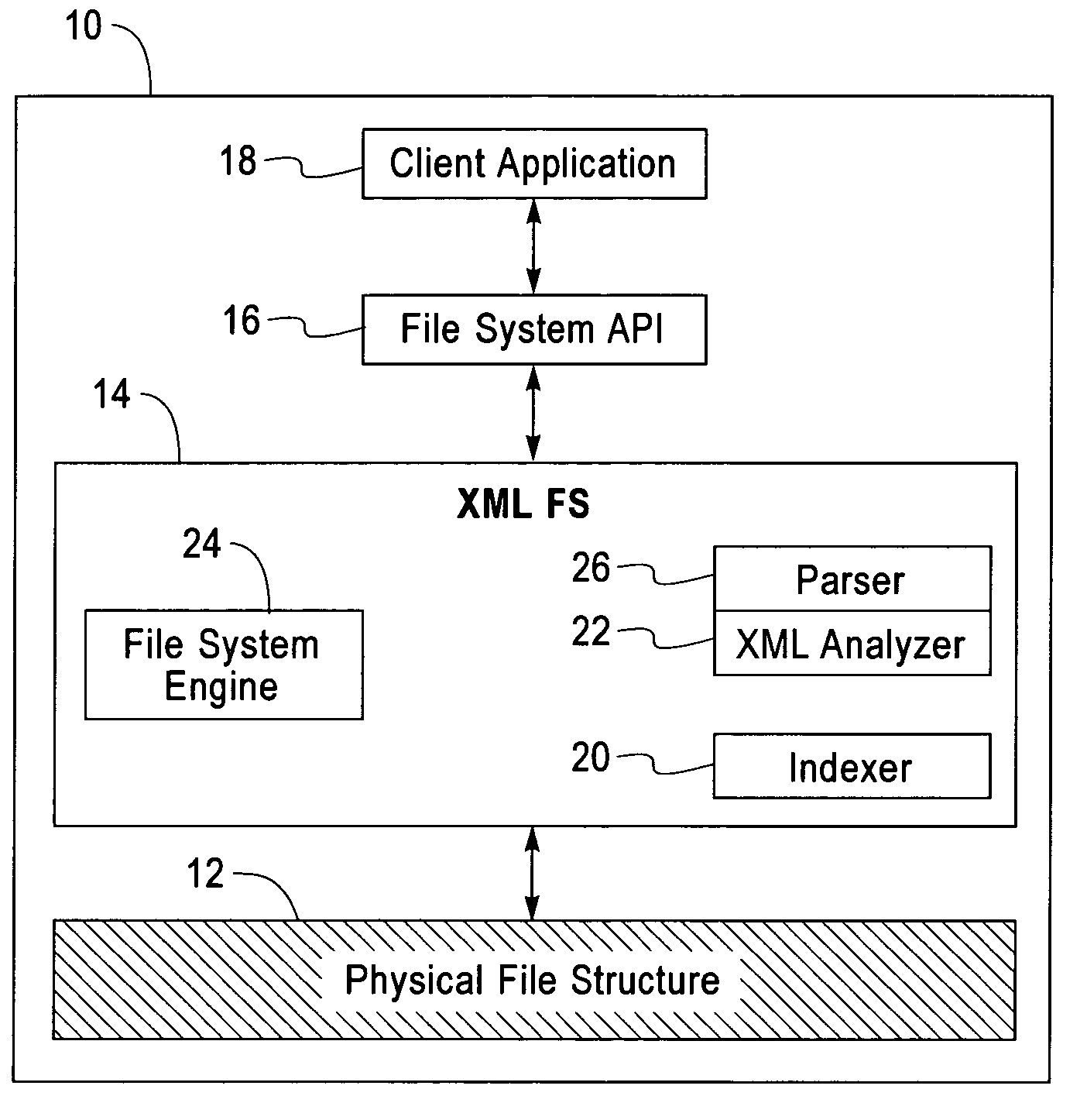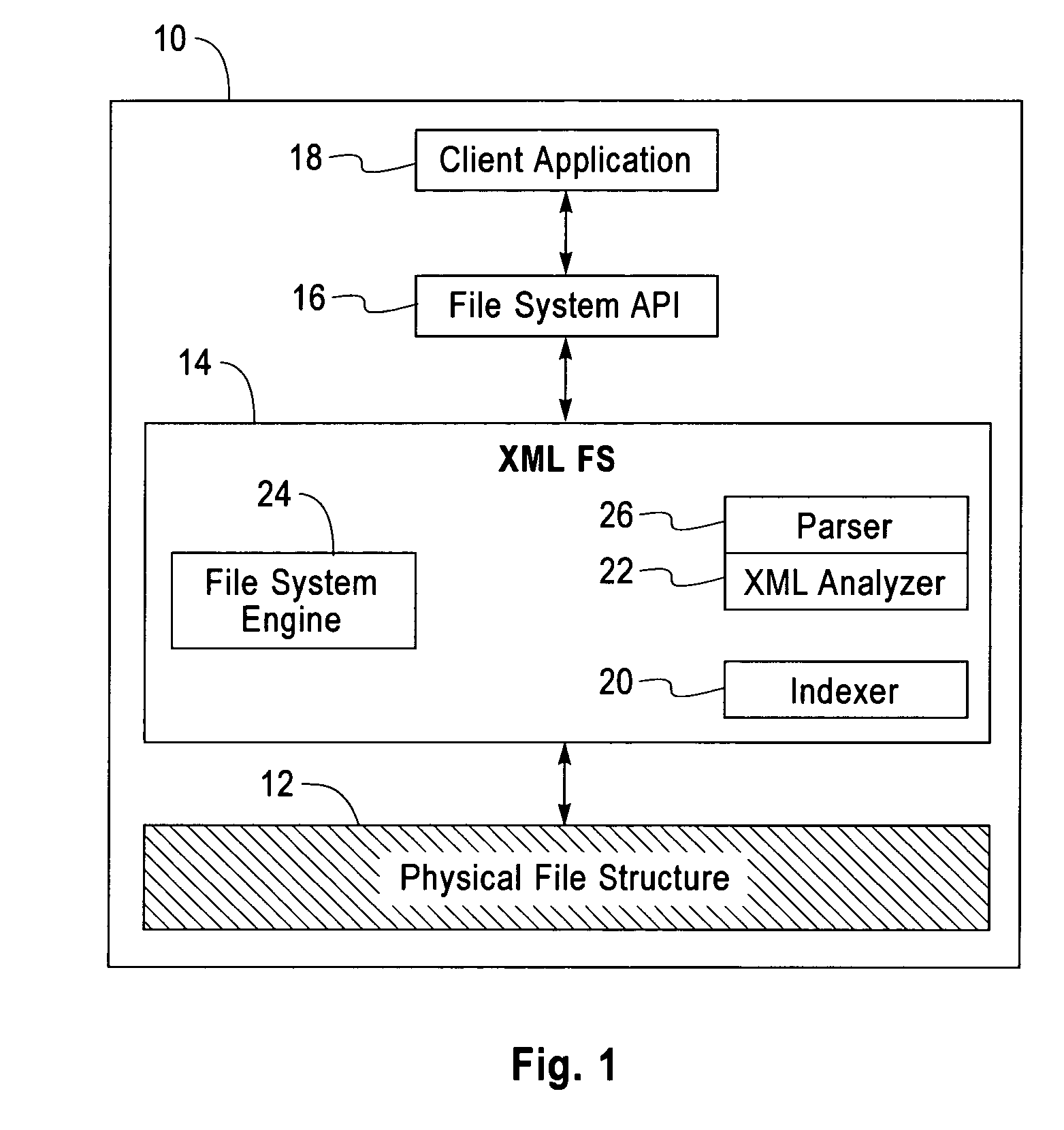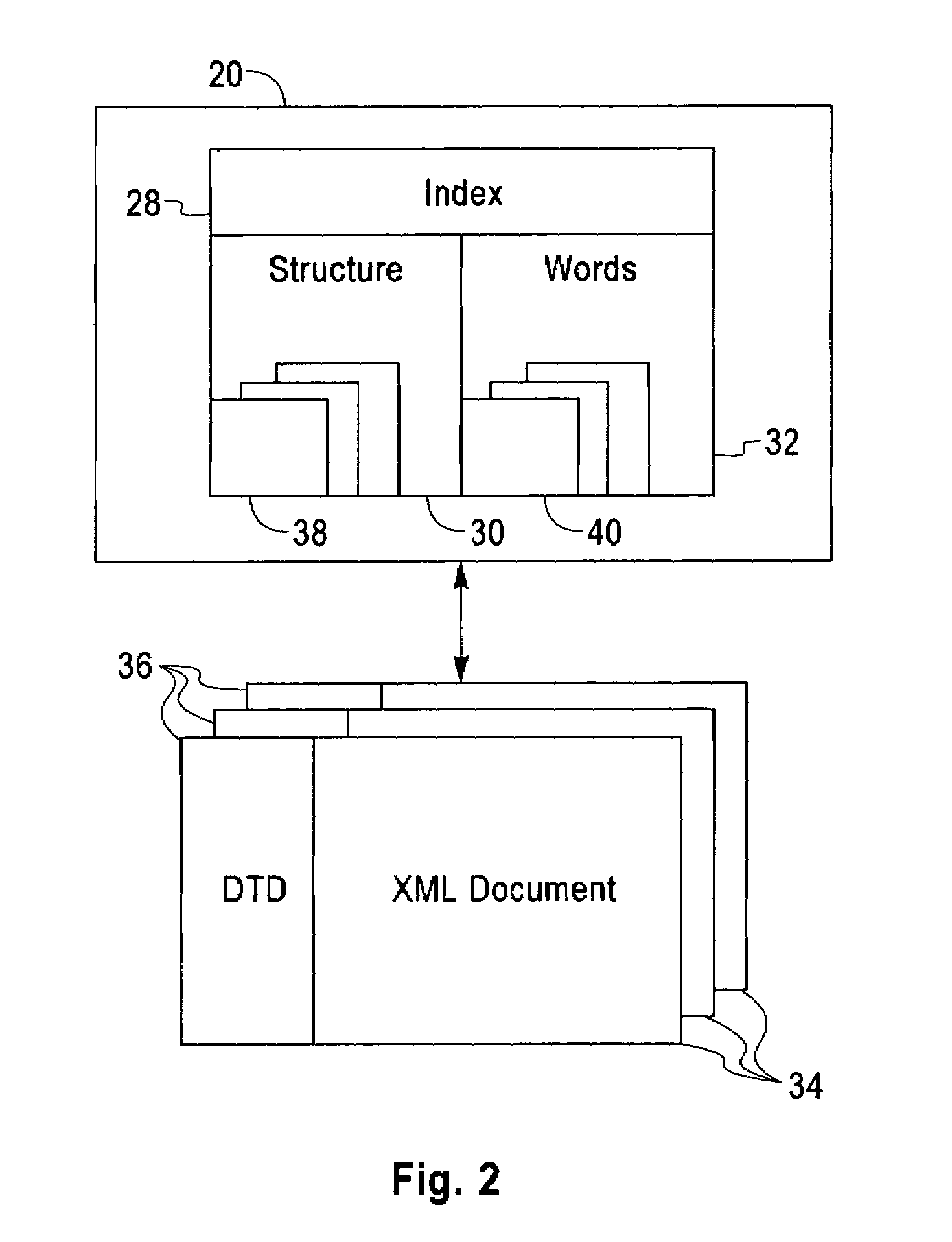File system with access and retrieval of XML documents
a file system and document technology, applied in the field of computer file systems, can solve the problems of static, inability to efficiently manage the hierarchical structure of documents, and inability to efficiently deal with the information load of conventional file systems, and achieve the effect of increasing the impracticality of document management, storing documents, and increasing the difficulty of storing documents
- Summary
- Abstract
- Description
- Claims
- Application Information
AI Technical Summary
Benefits of technology
Problems solved by technology
Method used
Image
Examples
example 1
[0124]Reference is now made to FIG. 6, which represents a computer monitor screen display. The description of FIG. 6 is to be read in conjunction with FIGS. 1 and 2. The arrangement 10 is employed in the following example, which excerpts a session in which a user desires to identify all the companies that are listed on the stock exchange mechanism, NASDAQ, using documents that are stored in the file structure 12.
[0125]The screen display 92 represents the relevant portion of the output of the well-known Windows Explorer® application of the Microsoft Windows® operating system. The entry 94 of the left panel 96 is a NFS volume that corresponds to the XML repository. The right panel 98 is an expansion of the entry 94, and displays a plurality of file folders 100. The file folders 100 are roots of a virtual hierarchical tree containing the document type declarations of the files that are currently represented in the file structure 12. A particular folder 102, entitled “profile” is one of...
example 2
[0177]Assume that Fred wants to share files f1 and f2 that have sets of as shown in Listing 1. These files reside on a machine called Fred in directories called / home / fred / public / music / beatles / f1, and / home / fred / public / music / rock / general / f2:
[0178]
Listing 1f1: {, , }f2: {, , }.
[0179]John has files j1 and j2 which reside on a machine called John in directories called d:\john\stuff\songs\j1 and d:\john\stuff\songs\j2 as shown in Listing 2.
[0180]
Listing 2j1: {, , }j2: {, , }
[0181]Mary has files m1 and m2 which reside on a machine called Mary in directories called: d:\m1 and c:\system32\m2 as shown in Listing 3.
[0182]
Listing 3m1: {, , }m2: {, ,}
[0183]Connecting all these files via a distributed sharing mechanism, which allows for browsing, requires navigation through a hierarchy created by another person. As noted above, the indexing technique according to the alternate embodiment creates an intuitive virtual structure of all the combined information that is navigable. Files are visible...
PUM
 Login to View More
Login to View More Abstract
Description
Claims
Application Information
 Login to View More
Login to View More - R&D
- Intellectual Property
- Life Sciences
- Materials
- Tech Scout
- Unparalleled Data Quality
- Higher Quality Content
- 60% Fewer Hallucinations
Browse by: Latest US Patents, China's latest patents, Technical Efficacy Thesaurus, Application Domain, Technology Topic, Popular Technical Reports.
© 2025 PatSnap. All rights reserved.Legal|Privacy policy|Modern Slavery Act Transparency Statement|Sitemap|About US| Contact US: help@patsnap.com



